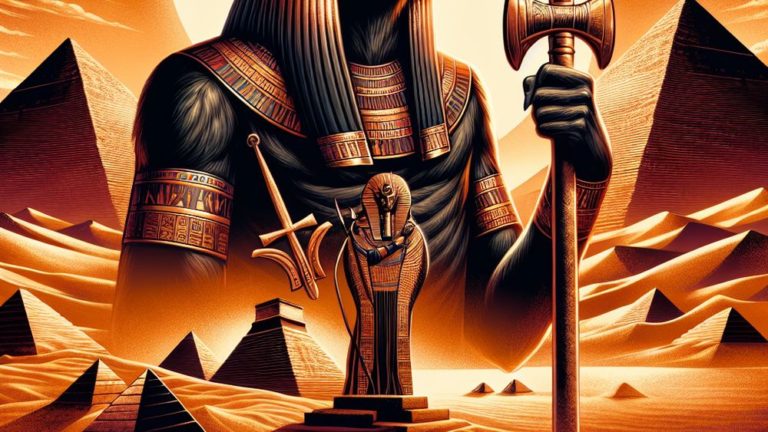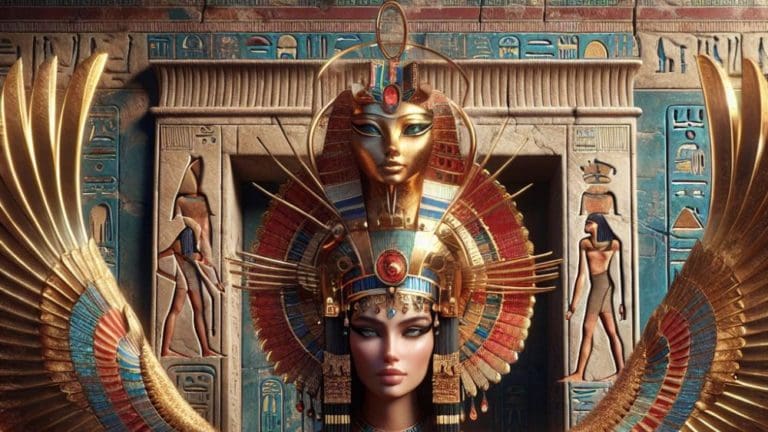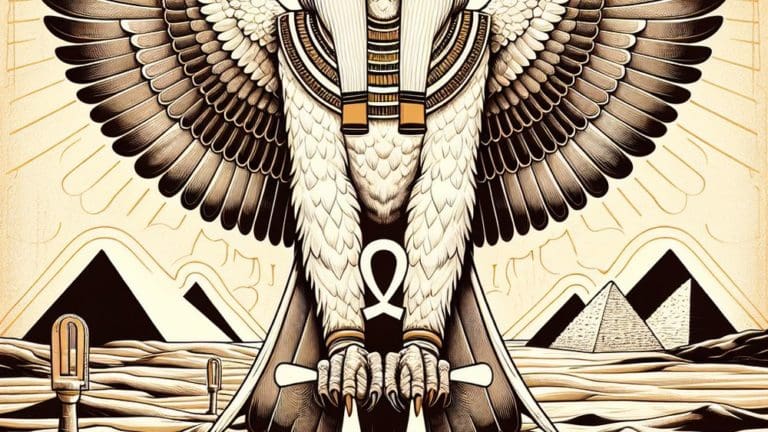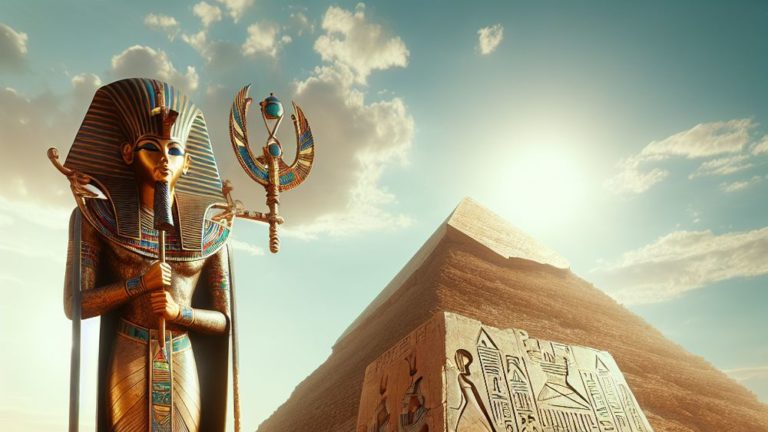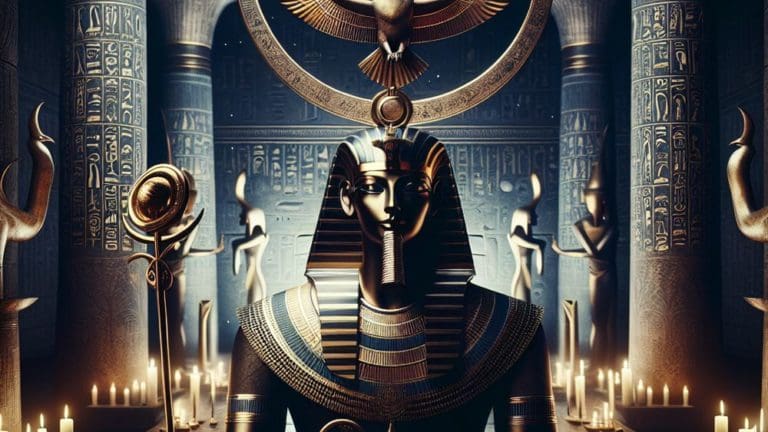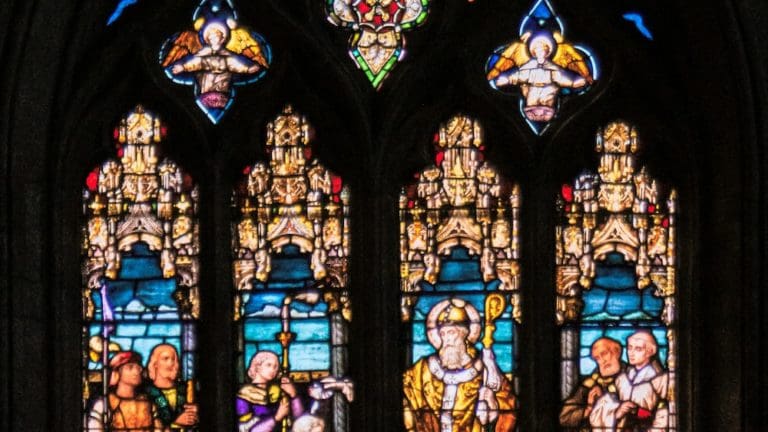Discover The Mysteries Of The Egyptian God Isis
Discover The Mysteries Of The Egyptian God Isis
Diving deep into the heart of ancient Egyptian mythology, the Egyptian god Isis stands out as a figure shrouded in mystique and reverence. Her story is one that has captured the imaginations of many, painting a picture of power, rebirth, and the undeniable strength of maternal love. Isis’s legacy is so powerful that her worship transcended Egyptian borders, influencing other cultures and leaving a mark that is still explored and celebrated today.
Key Points:
- Isis, an Egyptian goddess, embodies power, rebirth, and maternal love.
- Her name ‘Isis’ or ‘Aset’ signifies ‘throne,’ highlighting her authority and maternal role.
- Isis is pivotal in Egyptian mythology, as the wife of Osiris and mother of Horus.
- She is revered for her magical prowess, wisdom, and protective nature.
- Isis symbolizes fertility, motherhood, and celestial protection.
- Worship of Isis spread beyond Egypt, influencing other cultures.
- Festivals and rituals celebrated Isis’s wisdom, magic, and maternal qualities.
Imagine a goddess so versatile, embodying the role of magician, mother, wife, and goddess of the dead all at once. That’s Isis for you. Her tales are not just stories; they are deeply symbolic narratives that highlight the complexities of life, death, and the afterlife. Join me as we unravel the mysteries of this enigmatic goddess, exploring her origins, roles, and the profound impact she had on ancient Egyptian society and beyond.
The Enigmatic Origins of Isis
Isis’s beginnings are as fascinating as her character itself. Dive in, and you’ll find a goddess whose origins are deeply entrenched in the earliest days of Egyptian mythology.
Unveiling the Name and Its Significance
The name ‘Isis’ is not just a label; it’s a key to understanding her essence. In the Egyptian language, she’s known as ‘Aset’ or ‘Iset,’ with the root of her name implying ‘throne’ or ‘seat of power’. This connection to the throne highlights her role as the protector of the ruler and symbolizes her status as the ultimate mother figure, intertwining authority and maternity in a seamless blend. The significance of her name speaks to her importance in Egyptian society, underscoring her influence over royalty and her revered status among the gods.
Understanding the name ‘Isis’ as ‘Aset’ or ‘Iset’ emphasizes her authority and motherly role in Egyptian society.
Tracing the Roots: Isis in Early Egyptian Mythology
Let’s backtrack a bit to where it all began. Isis wasn’t just plucked out of thin air; her roots are deeply embedded in the rich soil of Egyptian mythology. From the Old Kingdom, she has been a crucial figure, evolving in her roles and significance throughout the dynasties.
- Early mentions in pyramid texts depict her as the wife and sister of Osiris, and mother of Horus.
- Isis was renowned for her magical prowess, bringing Osiris back from the dead to conceive their son, Horus.
- She played a central role in the Osiris myth, which was integral to Egyptian beliefs about the afterlife and resurrection.
- Her attributes and powers grew over time, making her one of the most versatile and worshipped deities in Egyptian history.
The Multifaceted Roles of Isis
Exploring Isis is like diving into a sea of endless stories and symbols. She was not just a one-dimensional figure; her roles were as varied as they were significant.

Isis as the Goddess of Magic and Wisdom
Magic and wisdom were in Isis’s wheelhouse, showcasing her as not just a powerful goddess but a wise one too. Her knowledge of magic was so profound that she was often called upon for protection spells and healing, embodying the essence of a divine magician. Her mastery over magical spells and rituals made her an indispensable figure in the pantheon, revered not only by the gods and goddesses but by humans as well.
Isis’s wisdom stretched far beyond magic. She was the guardian of divine knowledge, passing on her wisdom to her followers through priests and hymns. Her abilities to heal the sick, protect the deceased, and use her spells for the benefit of the Egyptians solidified her as a beacon of hope and a pillar of support in times of need.
Isis was revered for her profound knowledge of magic and wisdom, embodying the essence of a divine magician and a beacon of hope for Egyptians.
The Celestial Aspect: Isis as the Sky Goddess
Isis’s identity as the Sky Goddess is an amazing aspect of her mythology that sometimes gets overshadowed by her other roles. Picture this: a goddess whose gigantic wings span the heavens, enfolding the earth in her embrace. That’s Isis for you, up there, symbolizing protection and motherhood on a cosmic scale.
She was imagined as the mother of every king – her lap the throne, and her wings spread wide to shelter her children. In this celestial role, Isis was not just a queen; she was the ultimate mother, watching over the pharaohs as her own children and guiding the sun across the sky. Oh, and let’s not forget her role in the myth of the drowning son, Horus, where her tears, believed to cause the annual flooding of the Nile, were a reflection of her deep maternal bond and influence over the cycle of life and rebirth.
Protector of the Throne and Royal Relationships
Isis wasn’t just any goddess, she was the quintessential figure behind the throne, quite literally. The Egyptian mythology brims with stories of how she used her wisdom and magical skills to protect her husband Osiris, and then her son Horus, ensuring the stability of their reigns. This made her a symbol of the protective and guiding force behind the Egyptian kings.
Her role as a protector wasn’t just about wielding magic; it was also about maintaining royal relationships. Isis was the sister and wife of Osiris, and mother to Horus, making her an integral part of the divine and royal lineage. Her story intertwines with the tales of treason by Set, Osiris’s brother, showcasing her as the savior of her family and, by extension, the throne. This made her revered among the Egyptian queens and commoners alike, as a guardian figure.
The Universal Mother: Isis’s Role in Fertility and Motherhood
When talking about Isis, you can’t skip her awesome role as the Universal Mother. She was everything about fertility and motherhood, embodying the ideal mother figure. Egyptians turned to her in prayers for offspring and saw her as a guardian during childbirth.
- Protection during childbirth
- Fertility blessings
- Guidance for mothers
- Safe upbringing of children
This role of Isis underpinned her worship across Egypt, making her loved by all, from the highest of queens to the common folk.
Isis embodies the essence of motherhood, offering protection, fertility blessings, guidance, and ensuring the safe upbringing of children, making her worship widespread and beloved.
Symbols and Worship of Isis
Diving into the symbols and worship of Isis is like opening a treasure trove of ancient Egyptian spirituality and devotion. This goddess wasn’t just another deity; she was worshipped extensively across Egypt and beyond, with symbols that represented her powers, protection, and maternal qualities. Her followers dedicated temples, performed hymns, and celebrated festivals in her honor, making her one of the most revered Egyptian deities.

Deciphering Isis’s Iconography
The iconography of Isis is rich and layered, overflowing with symbols that speak volumes about her roles and powers. Here’s a quick look at some of her most iconic symbols:
| Symbol | Significance |
|---|---|
| Throne | Represents her role as the protector of the throne and royal relationships. |
| Sistrum | Indicates her association with music, fertility, and joy. |
| Knot of Isis | Symbolizes eternal life and the mysteries of magic that she governs. |
| Wings | Denote her protective nature and her role as a guardian deity. |
By understanding these symbols, we get a peek into the multi-faceted identity of Isis and how the Egyptians envisioned her divine powers and protection.
The Cult of Isis: Priests and Personal Devotion
Isis’s cult was something else, really. It wasn’t just about public worshipping; it was deeply personal and quite pervasive. Priests dedicated to Isis busied themselves with rituals that sought her blessings for magic, protection, and fertility, keeping her myths alive through stories and hymns.
On the other hand, personal devotion took many forms. Followers would have amulets or household altars, often invoking her name in prayers for help or guidance. Her ability to resonate on such a personal level with the Egyptians, across all levels of society, is why her cult remained significant well into the Roman times.
Celebrating Isis: Festivals and Rituals
Celebrating Isis was a big deal in ancient Egypt, with festivals and rituals that spanned the calendar, embracing her stories of magic, life, and protection.
- The Festival of Isis: Marking the beginning of the sailing season, celebrating her wisdom guiding ships.
- The Night of the Teardrop: A reflective festival where it was believed Isis’s tears for Osiris brought the Nile floods.
- Feast of the Beautiful Meeting: When Isis’s statue was carried to meet that of Osiris, symbolizing their eternal love.
These festivals were not only times of worship but also of community, reflecting the role of Isis in the daily life and spiritual landscape of the Egyptians.
Ancient Egyptian festivals honoring Isis were significant community events, symbolizing themes of wisdom, love, and eternal devotion.
FAQs
1. How did Isis become one of the most worshipped deities in Egypt?
Isis became one of the most worshipped deities in Egypt through her compelling story, which resonated deeply with the Egyptians. She was seen as the epitome of a devoted wife and mother, largely due to her relentless quest to revive her husband, Osiris. This tale of love, resilience, and magic made her an accessible and beloved figure across all layers of Egyptian society.
2. What are the most prominent symbols associated with Isis and their meanings?
The most prominent symbols associated with Isis include the throne headdress, signifying her role as the mother of Horus and protector of the throne. Another key symbol is the ankh, representing life and immortality, which reinforces her aspect as a goddess of magic and healing. These symbols were pervasive in Egyptian art, amulets, and temple carvings, embodying her protection and nurturing love.
3. Can you explain the significance of Isis in the Osiris myth?
In the Osiris myth, Isis’s significance is unmatched. She resurrected Osiris, her husband and brother, demonstrating her immense magical prowess. This act ensured the eternal reign of Osiris over the dead and established Horus, her son, as the rightful heir to the throne. Isis’s cunning and determination in these myths underscore her aspects as a protector, magician, and the embodiment of royal legitimacy.
4. How did the worship of Isis spread beyond Egypt?
The worship of Isis spread beyond Egypt through trade, conquest, and the integration of cultures across the Mediterranean. Her adaptable qualities resonated with Greek and Roman deities, leading to her assimilation into their pantheons. The widespread appeal of her protective and maternal aspects encouraged personal devotion among citizens and rulers alike, contributing to the establishment of temples and cults dedicated to her across the ancient world.
Conclusion
Isis’s journey from an Egyptian goddess to a deity revered across ancient civilizations is nothing short of remarkable. Her myths and symbols illustrate the rich tapestry of Egyptian religious thought and the potency of personal devotion. As we’ve explored, Isis was not just any deity; she was a goddess who embodied the concepts of love, protection, and wisdom. This is why the Egyptian god Isis continues to fascinate and inspire us even today. How awesome is that?
Thanks for diving into this journey with me. I seriously loved gabbing about Isis and everything she represents. Until next time, keep the magic of mythology alive in your hearts. Cheers, Cedric.


